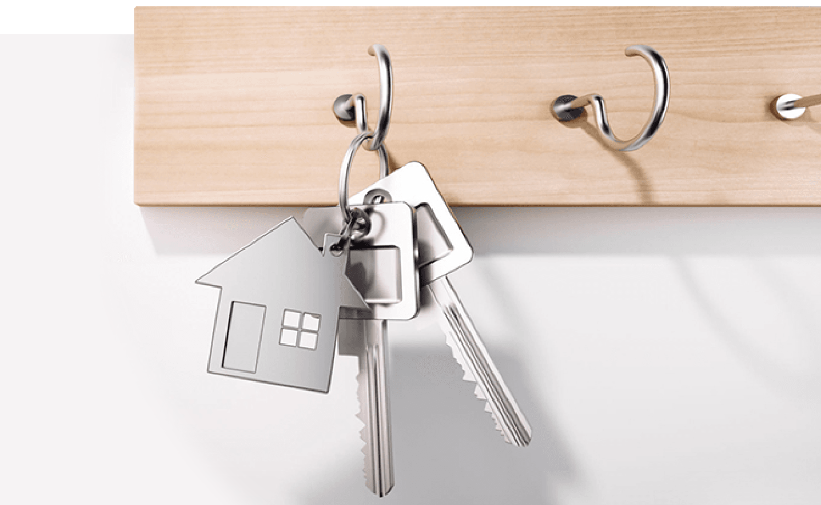Depending on the circumstance, buying a house may be a complicated process or relatively simple. Either way, there will be a number of steps that you need to go through. Here is a quick guide, full of useful information, whether you are a first-time buyer, or you’ve previously bought a home but would like a reminder of the house-buying process.
1. Calculate the money you need to buy your property
Your budget and what it can buy you is one of the most important things to work out at the start of the house buying process. This is not as simple as it sounds as there are a number of additional costs which must be budgeted for, in addition to the headline price of the property itself.
You’ll probably have stamp duty, the valuation fee, house survey, a solicitor’s fees and perhaps a removal company. The seller pays the estate agency fees though. Factor in any home improvement costs that you may be planning and new furnishings to make your house a home.
2. Build up your deposit
If you are arranging a mortgage, you’ll need to save up a deposit. Think 10% of the property value although it could be more or less. It may help to speak to a mortgage broker or specialist early on to understand how much you need to save.
3. Find the right mortgage
It is usually worth appointing a mortgage adviser or broker to assist you in finding the right mortgage. They can give you lots of helpful ideas that you might not have previously considered and can assess a full range of mortgage options for you.
There are many mortgage options out there although fixed-rate mortgages are popular with buyers who want the security of paying a set amount each month for the whole term. A flexible mortgage lets you make overpayments, underpayments and in some cases a pause of payments. Interest-only mortgages, as the name suggests, let you pay only the interest on the mortgage each month, not the money lent itself. This means you need to have a plan for paying this off at the end.
Balance how much money you can afford to pay each month against the length of time you wish to borrow, say 20 or 30 years.
4. Understand where you want to live
Moving to a new area? Be sure to research it to check it is right for you over the period you plan to live there. It’s wise to visit at different times of the day and week, too, to get a full representation of the area.
You could arrange several days in a hotel or Airbnb or to see what it is like to live there – experience the local shops, restaurants and cafés. Do you have children or are making plans to start a family? You’ll want to know what the local schools, parks and amenities are like. Transport links such as bus, train and motorway network will also be useful to suss out.
5. Register with estate agents
Once you’ve decided on the area you’d like to buy in, you’ll need to register with a local estate agent like us.
Registration itself is free and will significantly increase the likelihood of finding the right property for you and your family. It’s advisable to meet the estate agent in person. That way, you’ll get a good sense of how they operate, but you’ll also have the opportunity to build a good relationship with them.
It’s worth giving them some insight into your current situation: any relevant information related to your finances, whether you’re renting or already a homeowner, and the size of deposit you have at your disposal, as well as the timeline you have in mind in terms of acquiring a property in the area.
The more eager and prepared you come across as a buyer, the more likely they are to contact you with potential properties that match your criteria and stipulations. Local estate agents, who are familiar with the area, and have a proven track record of facilitating property sales in their locality, tend to keep prospective buyers informed of new instructions coming to market, often before they’re advertised to the general public.
6. Apply for a mortgage in principle
A “mortgage in principle” serves as an initial indication of how much a lender (the mortgage provider) will offer you based on various details you provide – including your household income, average monthly outgoings and any debts outstanding.
Acquiring a mortgage in principle indicates that you’re prepared to purchase a property, and have sufficient evidence of your financial status, making you more appealing both to sellers and estate agents alike. It also demonstrates that you’re very likely to be approved for a mortgage.
This can usually be completed online through your chosen broker or lender. You’ll just need to be prepared to answer a series of straightforward questions about your savings, expenditure and income. The process involves a “soft credit check” and ensures you’re being offered a fairly accurate figure in terms of the sum you can borrow in principle.
7. Visit your potential property
While the majority of property search websites will give you a strong initial perspective in terms of their listings (including photos, digital street views and, often, video tours of the property in questions), it’s nevertheless crucial that you visit any property you’re seriously considering buying.
Viewing a home (or any property) in person will give you a much clearer and more immediate sense of whether it’s right for you: any potential issues (such as damp or poor ventilation), as well as more general points of interest (ceiling height, how much natural light each room is exposed to), will be much more obvious when you’re inside the building and able to inspect any specific areas which may have been omitted from the images or video footage featured in the advertisement.
8. Make an offer
In general, prospective buyers are used to making an initial offer that’s a little lower than the asking price for a home. But now that many properties ultimately sell for more than the price they are advertised at, you should probably consider the asking price to be a “guide price” or starting point. It’s worth searching online to find out how much similar homes in the area have sold for in order to gauge what the property is really worth in the current climate.
When you’re prepared to make an offer, speak directly to the estate agent and be sure to have your offer in writing (usually in an email), too. You should state that your offer is subject to a survey being carried out and request that the property be taken off the market, in order to prevent “gazumping”.
Be sure to highlight anything beneficial or expedient regarding your buying position, and a personal note addressed to the sellers, briefly detailing exactly why you’re so taken with the property can help you stand out. For example, first time buyers, or families who are after more space, tend to be viewed more favourably than investors.
9. Apply for a mortgage
It’s important to bear in mind that while a “mortgage in principle” is a considerable asset when it comes to navigating the property market, it isn’t the same as a formal mortgage offer. This means that when your offer is accepted, you’ll still need to apply for a mortgage (and it your lender may not offer you precisely the same sum as suggested in the mortgage in principle). By this point in the process you should have a strong sense of what kind of mortgage is right (and attainable to you). You can apply for a mortgage yourself or do so through a broker if you have appointed one.
The lender (or mortgage provider) will require a number of documents like a valid passport or driving license, proof of current address and evidence of household income. Next, your lender will look over all your paperwork, assess your credit score, and conduct a valuation on the property you intend to purchase. On that basis, they will either accept or decline your mortgage application.
10. Get a property survey
A full and thorough property survey is advisable. While they are technically optional, you’ll have a much clearer idea of any potential structural issues, damp problems and repair work that may need to be carried out within the next few years.
This is especially crucial if you plan to live in the property long-term. Moreover, with the information gleaned from a survey you’ll be much better placed to negotiate on price, request that the seller fix any problems identified during the course of the survey, and, ultimately, pull out of the negotiations if any particularly troubling defects are brought to light by the surveyor. Broadly speaking there are three kinds of survey: a Condition Report, a Homebuyer’s Report and a Building Survey.
A condition report is the least extensive and covers the property’s condition including any risks, potential legal issues and more pressing potential issues. A Homebuyer’s Report includes all the services of a Conditions Report and, additionally, lists any defects that could affect the property’s
long-term value and provides advice on repairs and maintenance. A Build Survey, also known as a full structural survey, provides an in-depth look at the home’s condition. In this instance, the surveyor will likely assess the property as thoroughly as possible, for example, checking any attic space, inspecting the flooring and noting any potential damp issues.
11. Engage a property solicitor
A conveyancer is tasked with carrying out searches, drawing up and checking contracts, dealing with the Land Registry and organising the payment of any stamp duty due. It’s not necessary for your conveyancer to be a fully qualified solicitor, but you may prefer to instruct a solicitor with experience in property law.
It’s best to appoint a conveyancer before making your offer, but you should certainly have one in place and ready to commence work shortly after your offer is accepted.
12. Exchange and complete
A conveyancer is tasked with carrying out searches, drawing up and checking contracts, dealing with the Land Registry and organising the payment of any stamp duty due. It’s not necessary for your conveyancer to be a fully qualified solicitor, but you may prefer to instruct a solicitor with experience in property law.
It’s best to appoint a conveyancer before making your offer, but you should certainly have one in place and ready to commence work shortly after your offer is accepted.
13. Set up home insurance
Buildings insurance is essential and should be in effect from the day you exchange contracts. Typically, this is a precondition for most mortgage providers to ensure a smooth transition of ownership. For example, if the property were to suffer considerable damage between exchange and completion and you had no insurance in place, you’d be left in a stressful, and potentially very costly, position.
14. Moving in
On completion, the property is now officially yours and you are free to move in at your own pace. It’s fairly common for the buyer to be given the keys around midday once completion is finalised. Remember to choose a date for completion that suits your own needs, as well as any family or dependents you may have. For example, if you have children, it will likely be most convenient to move in on a weekend or during the school holidays. And if you require assistance from family or friends, ensure that the completion date is convenient for them, too.
15. Update the locks
For many people, changing the locks on the property is a priority. It’s not a matter of whether or not you trust the seller necessarily; you can’t be sure who has historically had access to the property, or if there are any spare keys being held by a third party. Even more important: if you fail to have the locks changed and your new home is burgled, your insurance claim may not be upheld.





